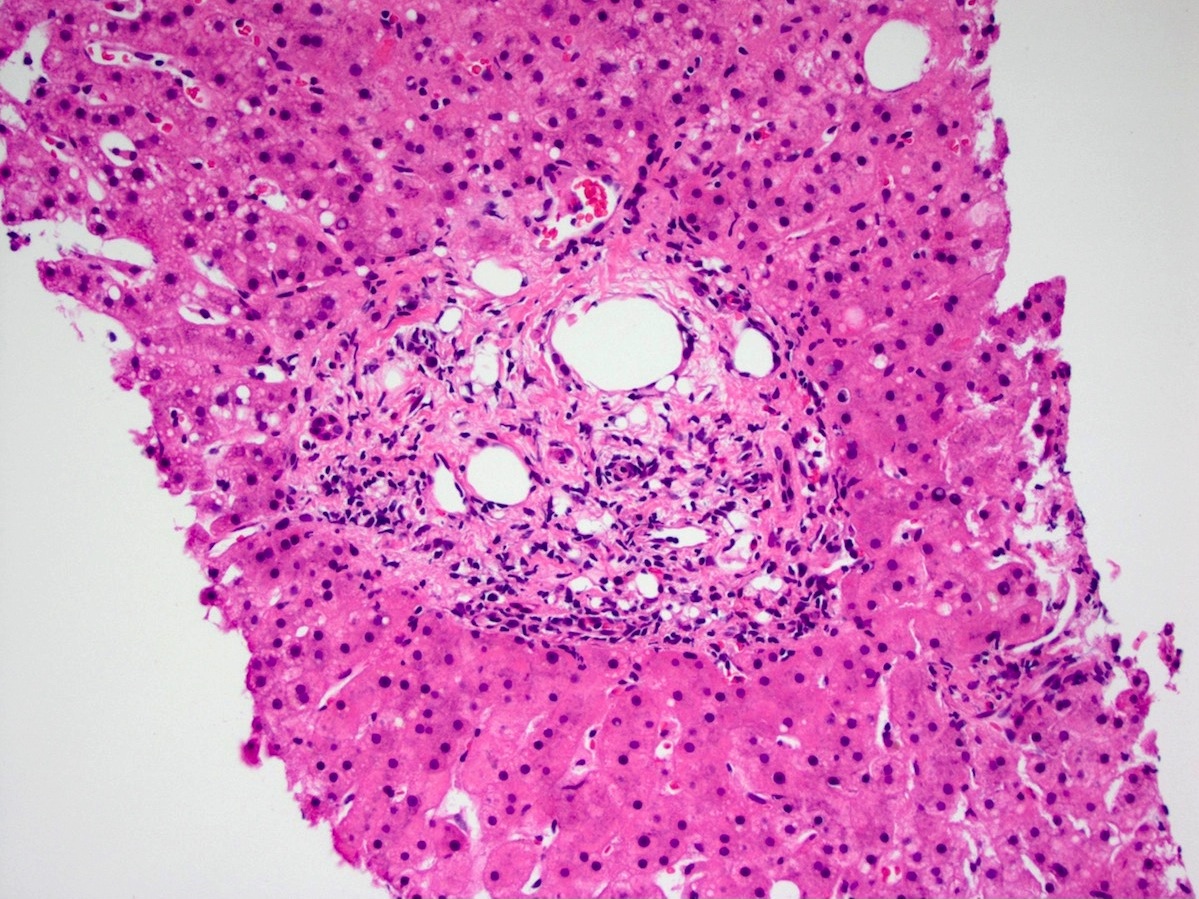Table of Contents
Definition / general | Essential features | Terminology | Epidemiology | Pathophysiology | Clinical features | Diagnosis | Radiology description | Radiology images | Treatment | Microscopic (histologic) description | Microscopic (histologic) images | Molecular / cytogenetics description | Sample pathology report | Board review style question #1 | Board review style answer #1Cite this page: Gonzalez R. Hereditary hemorrhagic telangiectasia. PathologyOutlines.com website. https://www.pathologyoutlines.com/topic/liverHHT.html. Accessed April 3rd, 2025.
Definition / general
- Hereditary disease causing systemic telangiectasias, including in the liver
Essential features
- Syndrome that can cause telangiectasias or proliferative portal vessels within the liver
- Patients with liver involvement can develop cardiac failure
Terminology
- Also called Osler-Weber-Rendu disease
Epidemiology
- Up to 30% of patients with the syndrome develop liver disease, though not all will be symptomatic (N Engl J Med 2000;343:931)
Pathophysiology
- Vascular abnormalities can cause liver hyperperfusion, resulting in heart failure
Clinical features
- Patients may develop heart failure, portal hypertension and biliary disease from liver involvement (N Engl J Med 2000;343:931)
Diagnosis
- Typically confirmed radiologically
Radiology description
- Tortuous / twisted / enlarged arteries within the liver (Clin Imaging Sci 2012;2:26)
- No correlation between radiologic findings and clinical severity (AJR Am J Roentgenol 2006;187:W399)
Radiology images
Treatment
- Bevacizumab can improve high cardiac output (JAMA 2012;307:948)
- May require liver transplant (Ann Surg 2006;244:854)
Microscopic (histologic) description
- Thin walled portal vessels may proliferate, extend into parenchyma and become associated with fibrosis (periportal telangiectasia) and sinusoidal dilation
- Common hepatic artery is enlarged
- Vascular shunts may be arterioportal, arteriovenous or portovenous (Semin Liver Dis 2008;28:247)
- Background focal nodular hyperplasia or nodular regenerative hyperplasia may be seen (Ultrasound Med Biol 2004;30:1089)
- May rarely cause hepatic necrosis with bile extravasaion (Histopathology 2003;42:265)
Microscopic (histologic) images
Molecular / cytogenetics description
- Patients with liver disease more likely to have ALK1 (ACVRL1) mutation (HHT type 2) than ENG mutation (HHT type 1) (Hum Mutat 2005;25:320)
Sample pathology report
- Liver, biopsy:
- Liver parenchyma with numerous vascular channels within portal tracts and sinusoidal dilation (see comment)
- Comment: The findings are consistent with the patient’s reported history of hereditary hemorrhagic telangiectasia. Trichrome and iron stains are unremarkable.
Board review style question #1
- A patient develops high output cardiac failure with refractory epistaxis and dies. Autopsy shows numerous arteriovenous shunts throughout the liver, accompanied by sinusoidal dilation. Molecular testing on this patient would most likely show a germline mutation in which of the following genes?
A. ALK1 (ACVRL1)
B. FLT4
C. SMAD4
D. TEK
E. VHL
Board review style answer #1














